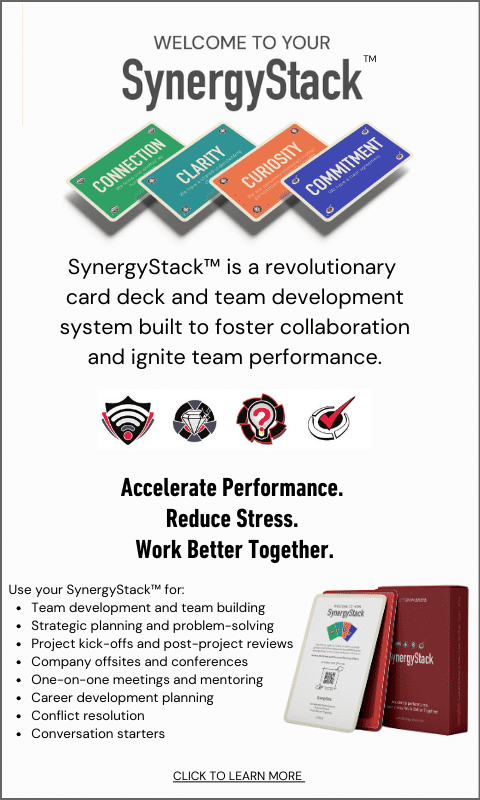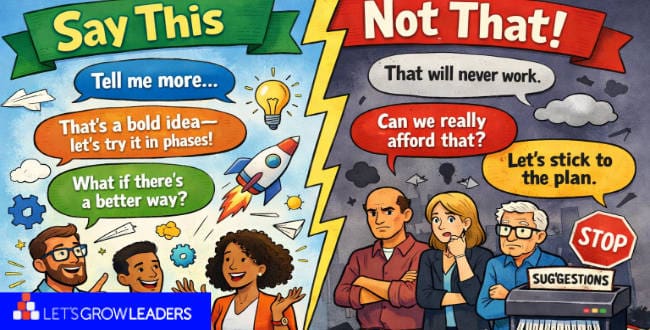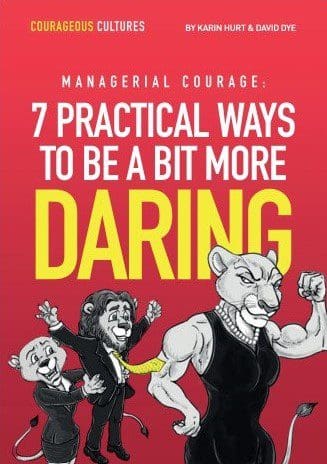To be a better performance coach avoid these common mistakes.
Have you ever had (what you thought was) a great performance coaching conversation—your employee commits to behavior change—but fifteen minutes later they’re back to their old habits?
So you give them more performance coaching, this time “louder” literally or through progressive discipline. But even so, nothing changes.
Most employees don’t come to work hoping to screw up. They want to improve. So why does so much performance coaching not work?
5 Reasons Your Employee Isn’t Acting on Your Coaching
When we ask employees in our training programs why it’s hard to hear their manager’s feedback, here’s what they tell us.
1. They’re overwhelmed.
“I’m trying to do better. But it’s all just too much. Every time we meet, my boss gives me something else to work on. No matter what I do, I can’t get it right. So, I ignore his long list of recommendations and do the best I can.”
What to do instead:
If you want real change, focus on one behavior at a time. Isolate a specific habit to work on and give them the training and support they need. Be sure they master that before moving on to the next development priority.
2. You’re not modeling the way.
“My boss keeps telling me my customer courtesy credits are too high—that I’m costing the business too much money. So I stopped giving credits. But when my customers get mad, they escalate to my supervisor. And guess, what? She ALWAYS gives them the credit! She’s the hero, and the credit goes against my numbers and I still end up on progressive action. I can’t win. So now I’m back to giving them the credit.”
What to do instead:
If you want your employees to hear your coaching, follow your standards. Your team will pay closer attention to what you do than what you say.
3. They’re not sure exactly what to do.
“My manager says I need to be more strategic. That sounds awesome. I’m all for that. But what does that mean? How do I do that?”
What to do instead:
Be sure your coaching is specific and actionable. Explain what success looks like in terms of behaviors and habits.
See Also: Beyond Magical Thinking: How to Ensure Your Team Gets It
4. They disagree.
“My supervisor keeps asking me to enforce a particular policy, but I just don’t think it’s right. It will harm MY customers and I’m sure it’s going to cause them to leave. I’ve tried to explain my concerns, but she tells me to stop thinking so much and just do what I’m told.”
What to do instead:
Explain the “why” behind what you’re asking them to do. Listen to their concerns. If possible look for alternative approaches. If you’ve done what you can to explain why and listened to their concerns, and they still won’t follow the policy, explain the consequences and ask for a commitment.
5. They’re confused.
“I’m not sure what’s important, because everything seems to be. I feel like I’m being pulled in a million directions.”
What to do instead:
Help your employees sort through the noise and competing priorities.
Be sure they know what matters most and why.
Most importantly, stay curious.
If your performance coaching is not yielding results, get curious and involve them in finding solutions. An I.N.S.P.I.R.E. conversation works well here.
Connect to your intention for the conversation and to the employee at a human level. Notice the behavior that’s not changing. Then show up curious about what’s going on and their ideas for solving your concern.
“I’ve noticed, that even though we’ve talked about this before, you’re continuing to ______ (insert behavior here.) I care about you and want you to be successful. I’m curious how this looks from your perspective. Why do you think this is still happening?” Be curious, and invite them to come up with solutions. Then move the conversation to commitment by scheduling time to talk about how their solution is working.
See Also: How to Provide More Meaningful Performance Feedback.








0 Comments